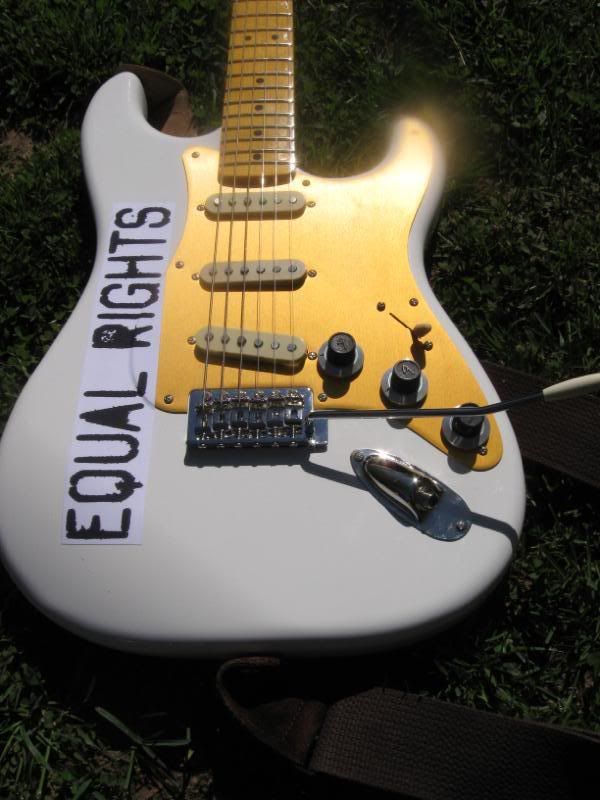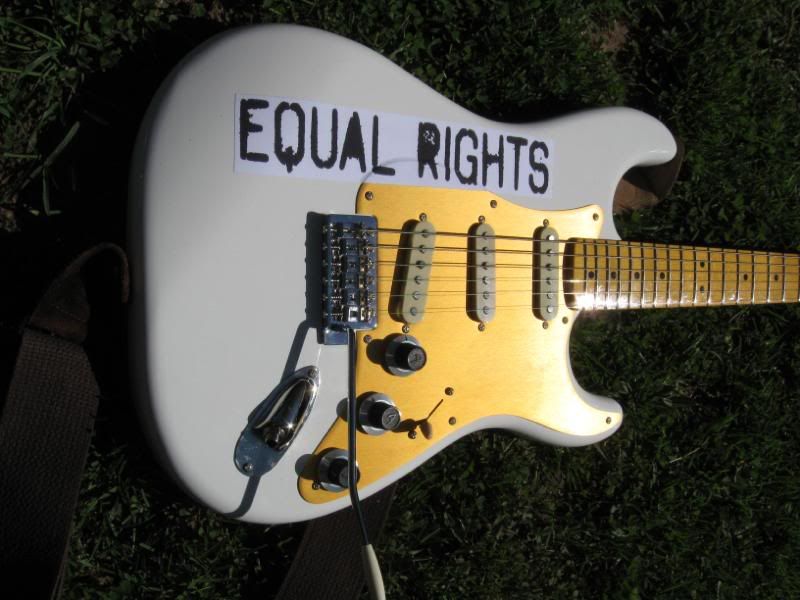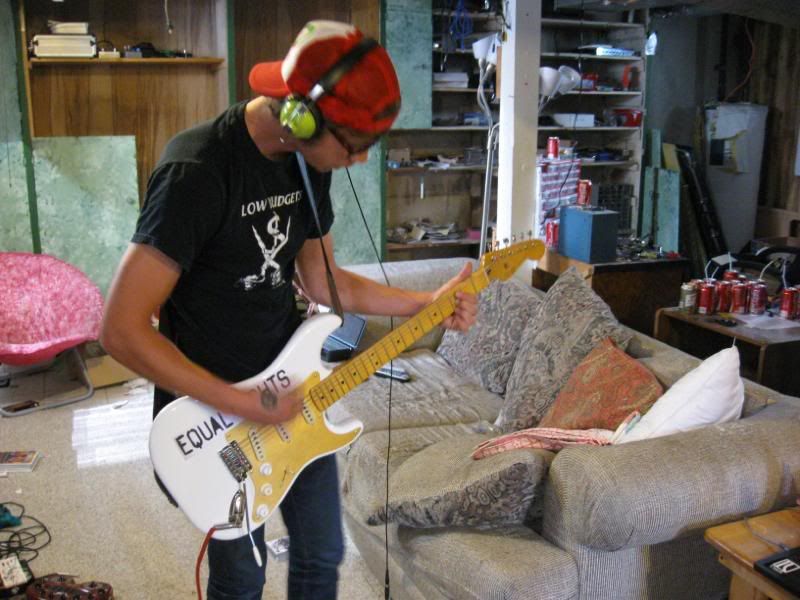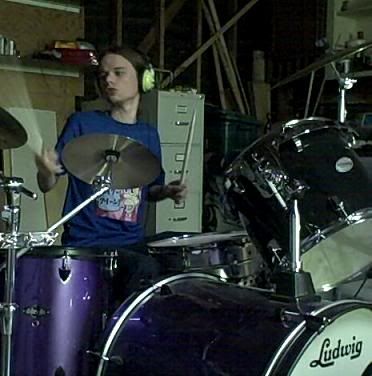That's right. A "stock" Strat trem is (hopefully) held in equilibrium by string tension in one direction vs. trem-spring tension in the other direction. The Tremsetter adds another couple springs, one on each side of the tug-of-war, to encourage the whole arrangement back to its equilibrium point. You can adjust both the strength of the "encouragement" and the location of the equilibrium point (such as floating vs. divebomb-only) with a thumbwheel and a set-screw.paul_ wrote:I believe a tremsetter powerfully ensures that the trem springs return to their original position, returning the strings to their original pitch. Strat trems can land flat of their original position with many set-ups.
I like to play bent double-stops, where you fret two strings and then bend only one of them while playing both. The Tremsetter keeps the bridge stable so that the extra tension on the bent string doesn't pull the unbent note out of tune (flat).
I'm sure it takes some getting used to. I've always had it in, and this is my only trem-equipped guitar, so it feels normal to me. You can definitely adjust the force the Tremsetter exerts, though if you go too light you'll get that string-bending-pulls-bridge deal I just described. Also, there can be a little bit of a flat spot when you pull/push the trem bar -- in other words the bar moves just a hair before you get resultssss. This is mainly in pulling up, I think. But you can fine-adjust most of the problem away, and it's pretty easy to cope with the rest.paul_ wrote:The trade-off I found with a tremsetter-equipped Strat was that the trem was a BASTARD to use. I've heard others say "ah it just stiffens it up a tad" so maybe I just wasn't expecting it.







